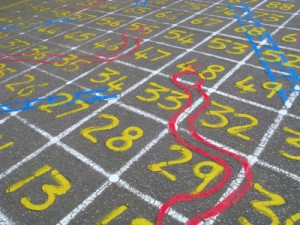The motor industry used to believe in The Sales Funnel. This was a six month timeline starting with the customer seeing an advert, reading reviews, visiting a dealer and ending with them buying the car. It sounded reasonable and probably reflected a sizeable proportion of car buyers a few years back.
A new study by research specialists TNS in China called the The Automotive Path to Purchase Study reveals a very different story. Consumers start with comparison websites, reviews by owners on social media and then look for the best price online before finally visiting a dealer to take delivery. But not necessarily in that order. And in a very short space of time. 25% do this within two weeks. 40% buy within a month.
‘Life is messy’, says Andy Turton of TNS, ‘and the way people buy cars is also messy. They don’t follow sales funnels any more. In fact with the range of online sources available right now consumers no longer need to have any contact with the brand until they pay the deposit’
That’s a pretty worrying thing for any brand owner and worth reading again: consumers no longer need to have any contact with the brand until they pay the deposit.
All that marketing investment in adverts, brochures, emails, videos, websites, PR, brand campaigns, CRM system, can all be by-passed as consumers follow their own path.
Here’s how it works.
The customers tracked in the TAPPS report started online (not necessarily with the brand website) and read reviews by other customers. A bad comment can lead the consumer to re-start their search with another brand. Much like Snakes and Ladders – the children’s game, only this time when they’ve climbed the ladder of excitement about the brand it doesn’t take much to slide down the snake of bad reviews and go to another car completely. And this is before they have event touched the brand website or read a brochure.
After a review of third party comments, a search of price comparison websites and talking amongst their peers and family, they decide to buy. They might go to the brand website to see more, or they may just buy from the online provider offering the best deal.
If you’re in the car business, I’m sure you’re already looking at the sales process and mapping it out to see what’s happening today. Or you should be. But the same applies whatever sector you’re in.
Think about your CRM system with its touch points, tracking system, outbound materials and events. It’s just too slow. And the system doesn’t reflect the way customers buy the product, or follow their social journey.
If that’s sounding familiar, it’s time for change and the 5 key steps to follow are:
1. Listen – understand your customer and what they’re actually doing
2. Plan – round-up your assets and identify the tools you need
3. Act – start using the tools but be prepared to change according to feedback
4. Measure – check what’s happening with regular surveys and reviews
5. Revise – adjust and go again
The channels of communication may have changed but the basic concepts remain the same; get the right message, to the right person at the right time. And with digital tools you can be precise with both targeting and measurement.
Just don’t leave it too long until you have that review…
About Al Clarke – I am a marketing and communications specialist who has worked in the motor industry at board level since 1997. I have held senior positions in global brands such as Ferrari and the BBC including a decade working as a journalist.I am a member of the Institute of Directors, the Public Relations Consultants Association, an expert member of the digital community Smart Insights and Life President of the Motor Industry Public Affairs Association.I speak regularly in the field of marketing communications to businesses and the media with particular reference to digital media. Find me on Twitter @alclarkeltd and LinkedIn.

